
How to Use 18650 Li-Ion: Examples, Pinouts, and Specs
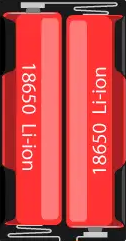
 Design with 18650 Li-Ion in Cirkit Designer
Design with 18650 Li-Ion in Cirkit DesignerIntroduction
The 18650 Li-Ion battery cell is a cylindrical lithium-ion rechargeable battery that has become a standard in the electronics industry. Known for its high energy density, long life cycle, and stable performance, it is widely used in various applications such as portable electronics, power tools, electric vehicles, and even in large-scale energy storage systems.
Explore Projects Built with 18650 Li-Ion
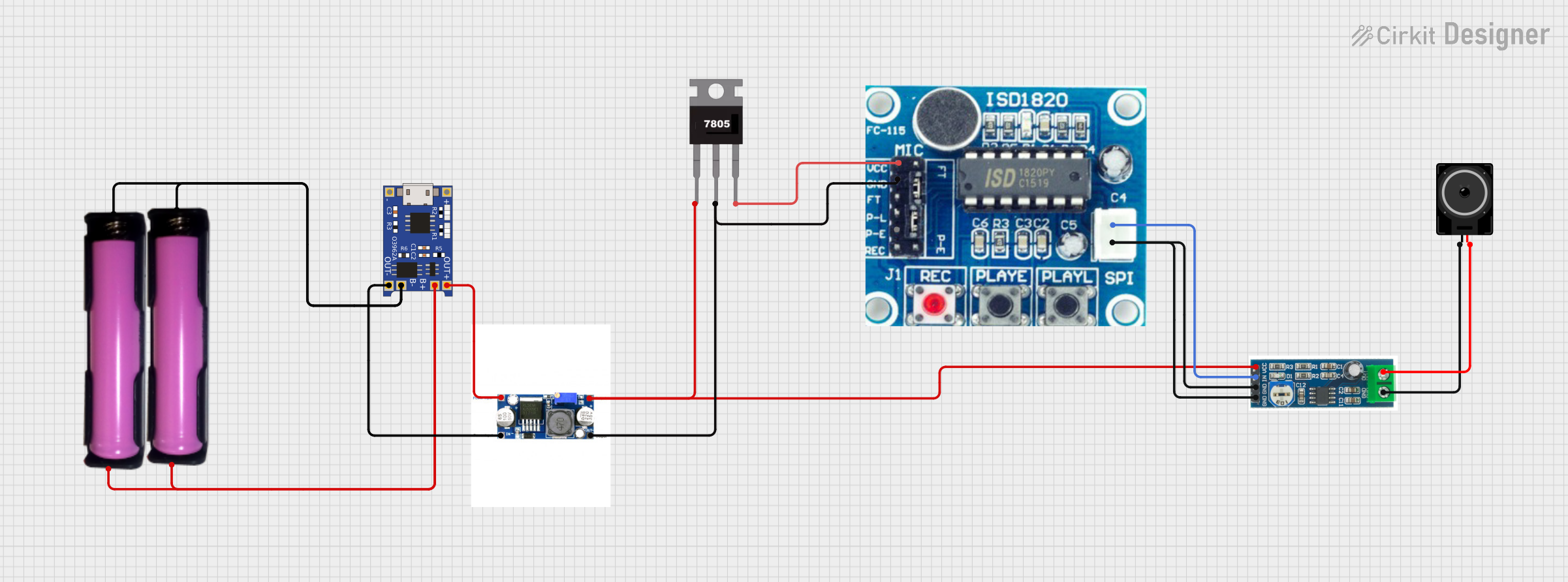
 Open Project in Cirkit Designer
Open Project in Cirkit Designer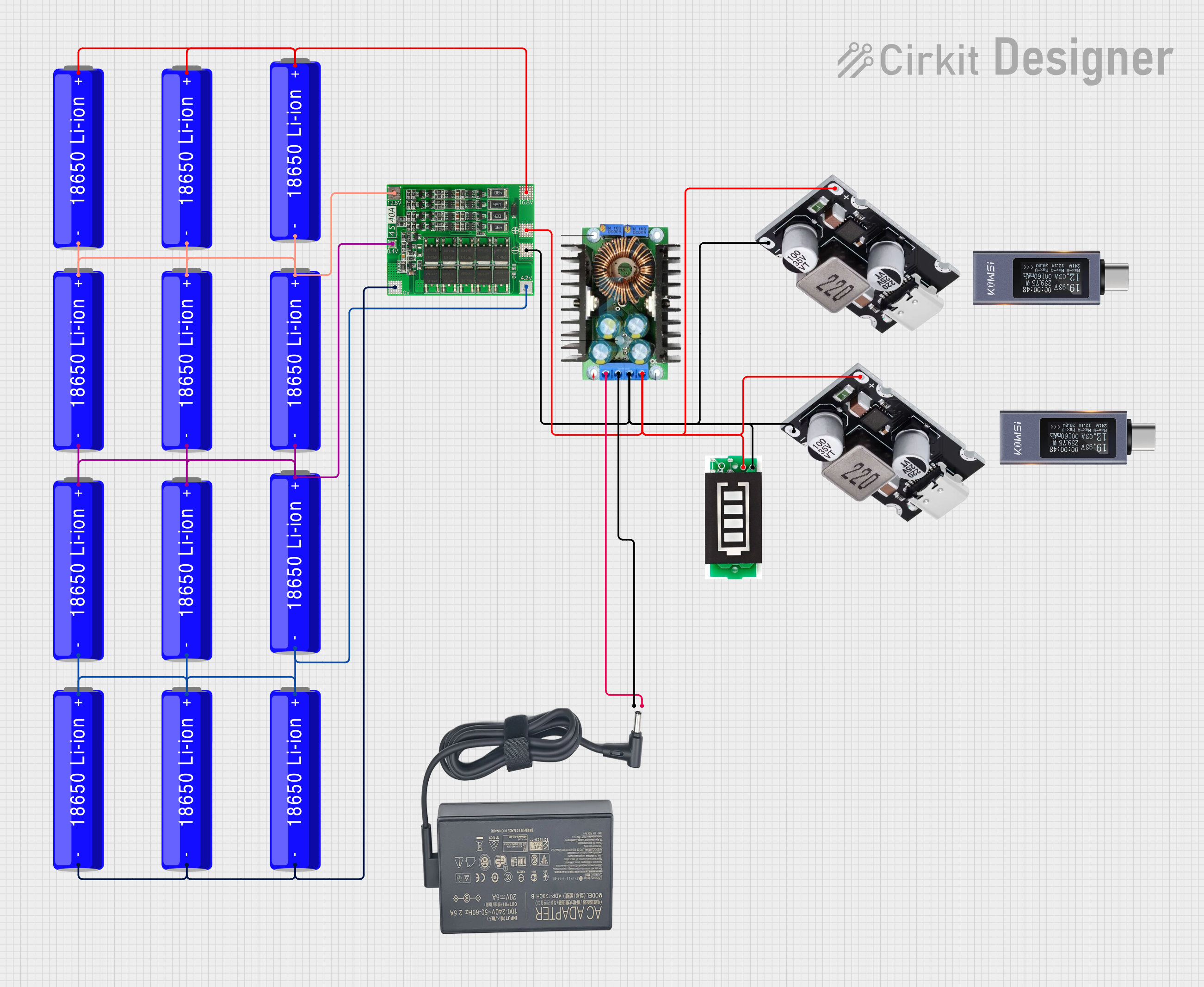
 Open Project in Cirkit Designer
Open Project in Cirkit Designer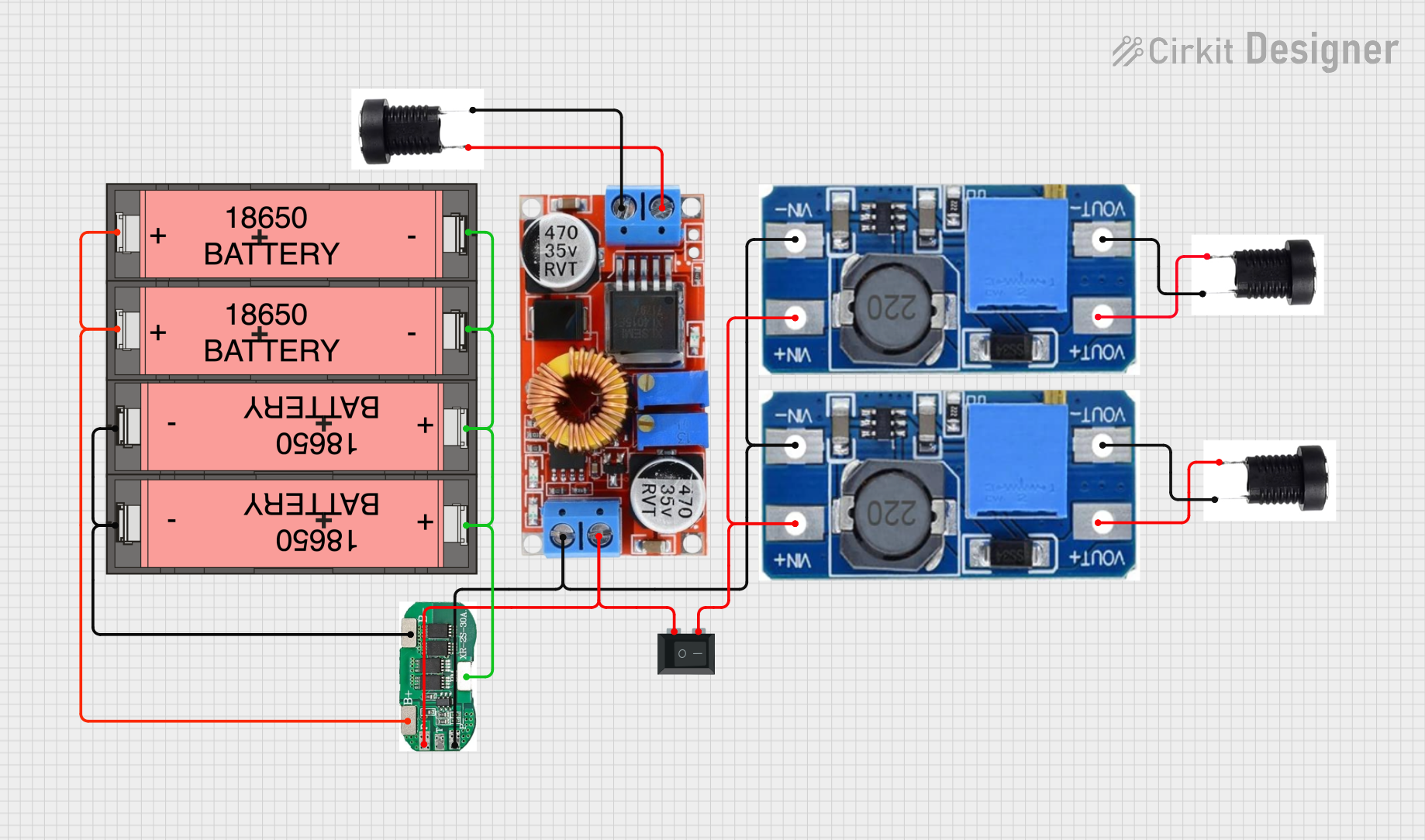
 Open Project in Cirkit Designer
Open Project in Cirkit Designer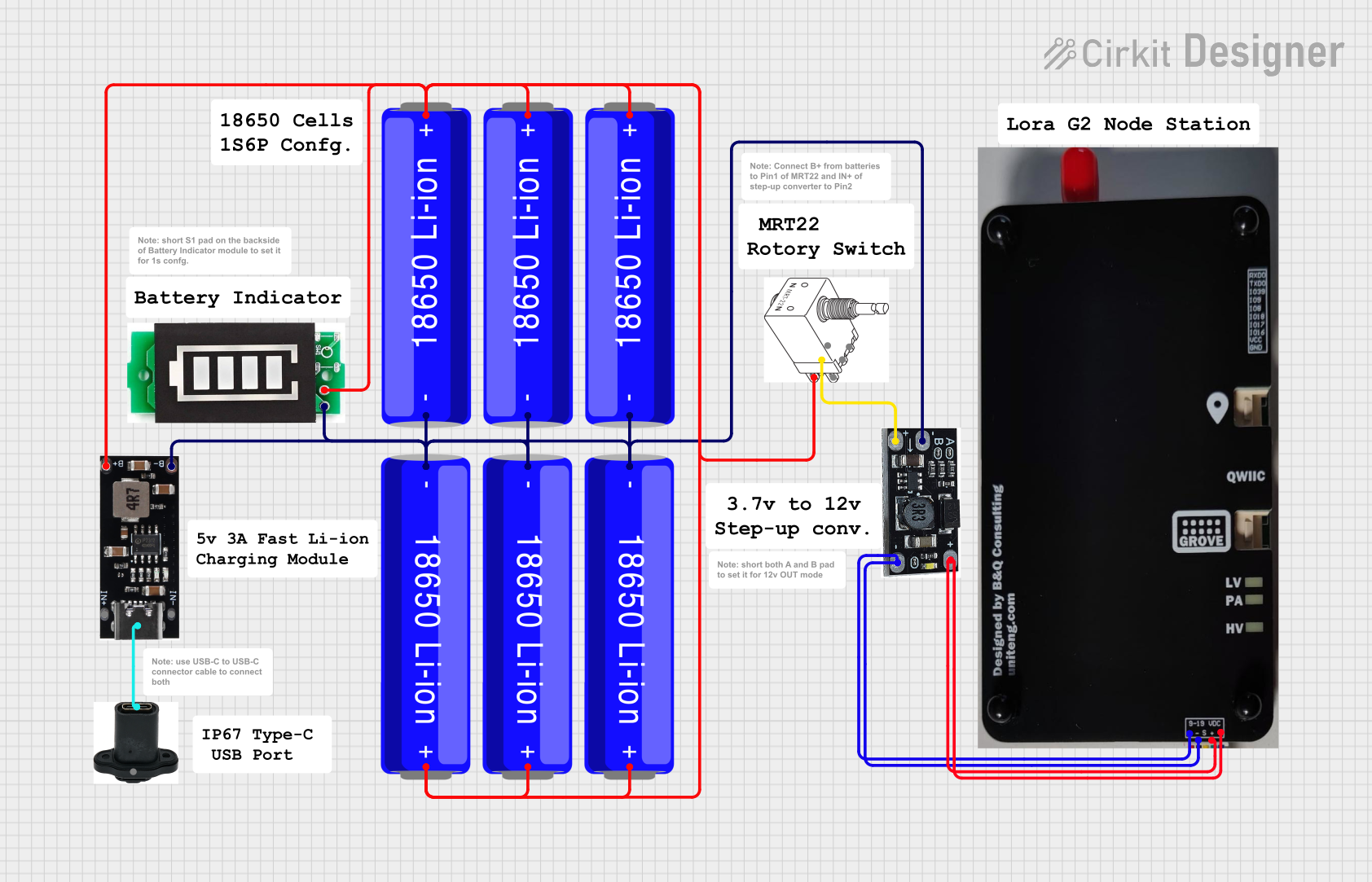
 Open Project in Cirkit Designer
Open Project in Cirkit DesignerExplore Projects Built with 18650 Li-Ion

 Open Project in Cirkit Designer
Open Project in Cirkit Designer
 Open Project in Cirkit Designer
Open Project in Cirkit Designer
 Open Project in Cirkit Designer
Open Project in Cirkit Designer
 Open Project in Cirkit Designer
Open Project in Cirkit DesignerCommon Applications and Use Cases
- Portable Electronics: Laptops, flashlights, cameras, and mobile devices.
- Electric Vehicles: Used in battery packs for electric bikes, scooters, and cars.
- Power Tools: Battery packs for cordless drills, saws, and other tools.
- Energy Storage: Part of larger battery systems for solar power storage or backup power supplies.
Technical Specifications
Key Technical Details
- Nominal Voltage: 3.6V - 3.7V
- Maximum Charge Voltage: 4.2V
- Cut-off Voltage: 2.5V - 3.0V
- Standard Capacity: Varies, typically around 1800mAh to 3500mAh
- Maximum Discharge Current: Varies, typically 20A to 35A
- Chemistry: Lithium-ion (Li-Ion)
- Cycle Life: Typically 300-500 cycles
Pin Configuration and Descriptions
Since the 18650 Li-Ion battery is a cell, it does not have a pin configuration but rather positive and negative terminals. Below is a description of these terminals:
| Terminal | Description |
|---|---|
| Positive (+) | The raised button or flat top terminal on one end of the battery. |
| Negative (-) | The flat or slightly indented terminal on the opposite end of the battery. |
Usage Instructions
How to Use the Component in a Circuit
- Battery Holder: Use a compatible 18650 battery holder or a custom battery pack to securely hold the battery.
- Polarity: Ensure correct polarity by connecting the positive terminal to the positive side of the circuit and the negative terminal to the ground.
- Protection Circuit: Incorporate a protection circuit to prevent overcharging, over-discharging, and short-circuiting.
- Charging: Use a dedicated Li-Ion battery charger that adheres to the CC/CV (constant current/constant voltage) charging profile.
Important Considerations and Best Practices
- Do not overcharge or over-discharge the battery beyond its specified limits.
- Avoid physical damage to the battery, which can lead to dangerous leaks or short circuits.
- Use a battery management system (BMS) for larger battery packs to monitor and balance the cells.
- Store in a cool, dry place and at a partial charge if not used for extended periods.
- Recycle responsibly as Li-Ion batteries are considered hazardous waste.
Troubleshooting and FAQs
Common Issues
- Battery won't charge: Check charger compatibility and connections. Ensure the protection circuit isn't activated due to a previous unsafe condition.
- Reduced capacity or runtime: This may indicate the battery is nearing the end of its life cycle.
- Battery overheating: Stop using the battery immediately. Overheating can be caused by overcharging, excessive discharge rates, or internal damage.
Solutions and Tips for Troubleshooting
- Use a multimeter to check the voltage of the battery. If it's below the cut-off voltage, the battery may be over-discharged.
- Inspect for damage: Look for any signs of bulging, leakage, or odor that may indicate a compromised battery.
- Consult the manufacturer's datasheet for specific troubleshooting steps related to the battery model.
FAQs
Q: Can I charge an 18650 battery with a standard AA battery charger? A: No, you must use a charger specifically designed for Li-Ion batteries with the correct charging profile.
Q: How can I extend the life of my 18650 battery? A: Avoid extreme temperatures, fully discharging, and overcharging the battery. Store at a partial charge in a cool, dry place.
Q: Is it safe to carry 18650 batteries in my pocket? A: It is not recommended to carry loose batteries in your pocket, especially without protection, as they can short-circuit and cause injury.
Q: Can I use a different type of lithium battery in place of an 18650? A: It depends on the device's battery compartment and voltage/current requirements. Always consult the device's specifications before substituting battery types.
Q: How do I dispose of 18650 batteries? A: Do not throw them in the trash. Take them to a battery recycling center or a designated e-waste disposal facility.
Example Code for Arduino UNO
Below is an example of how to read the voltage of an 18650 battery using an Arduino UNO. This setup requires a voltage divider circuit to bring the battery's voltage within the Arduino's ADC range.
const int batteryPin = A0; // Connect battery through a voltage divider to A0
void setup() {
Serial.begin(9600);
}
void loop() {
int sensorValue = analogRead(batteryPin);
float voltage = sensorValue * (5.0 / 1023.0) * 2; // Adjust based on voltage divider
Serial.print("Battery Voltage: ");
Serial.println(voltage);
delay(1000);
}
Note: The voltage divider should be designed so that the maximum battery voltage (4.2V) is scaled down to below 5V to prevent damage to the Arduino's analog input. The * 2 in the code compensates for the voltage being halved by the divider. Adjust this value based on your specific voltage divider ratio.